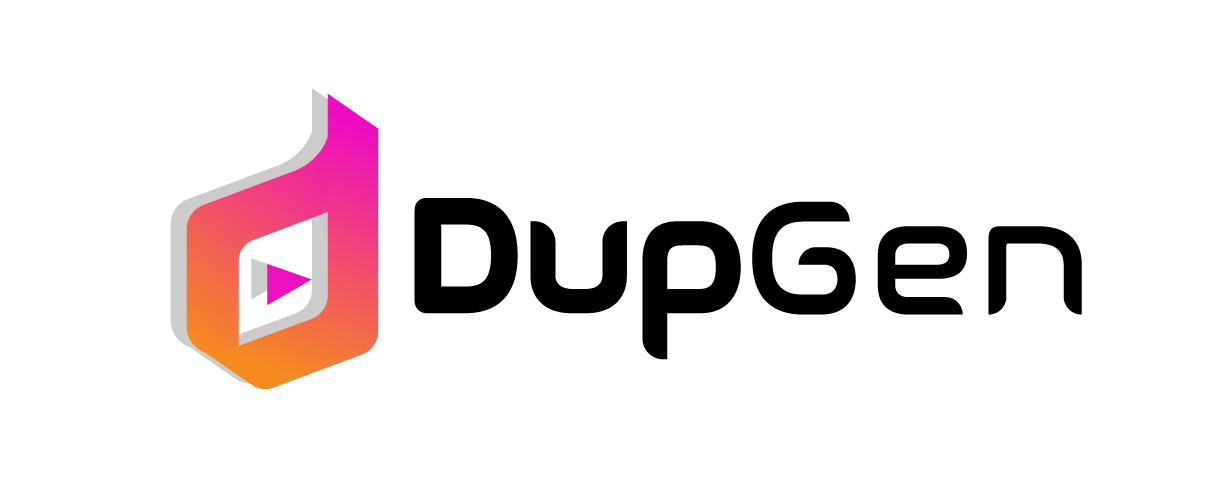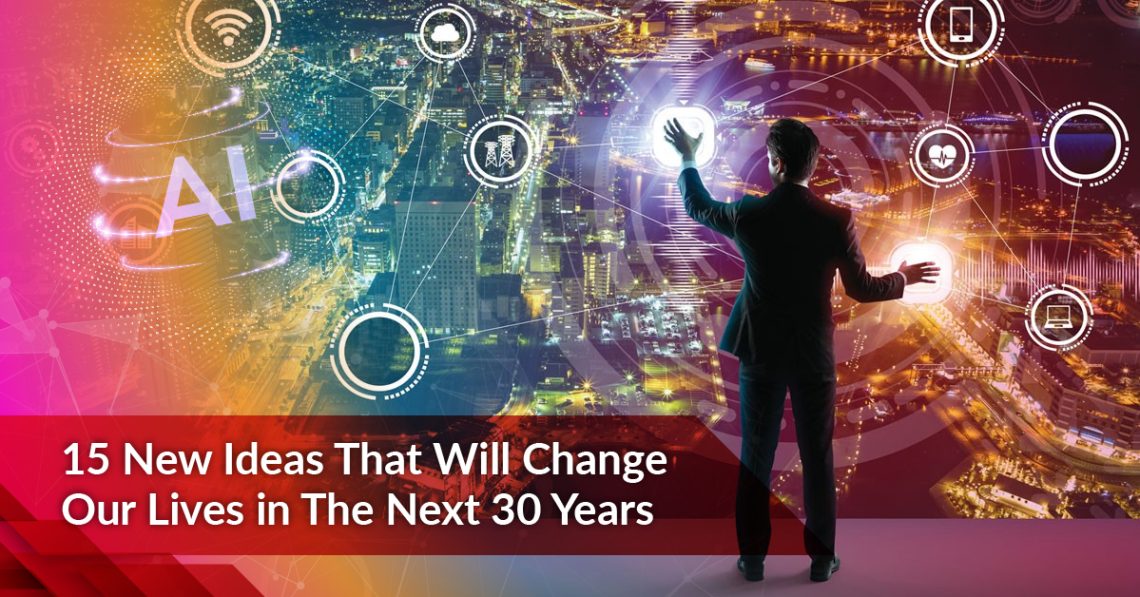The United States previously published a 35-page report on emerging technology trends from 2016 to 2045. This report consolidates the core of 32 technology trend research reports published by US government agencies, consulting agencies, think tanks, and scientific research institutions over the past five years.
The objective of this report is to assist relevant US departments in gaining a comprehensive understanding of the core technologies that may impact national power in the next 30 years. Furthermore, it will indicate the direction of technology investment for national and social capital, ensuring that the United States maintains its strategic advantage in the future.
1.Internet of Things (IoT)
The information provided by the Internet of Things will enable individuals to make more informed decisions and develop a more profound understanding of the world and themselves. Simultaneously, the Internet of Things will automate numerous tasks that were previously reliant on human labor, such as monitoring, administration, and maintenance. The convergence of artificial intelligence, data analysis, and the Internet of Things will establish a vast network of intelligent devices to automate countless business transactions without human intervention.
Nevertheless, the Internet of Things has also presented significant obstacles to personal privacy and network security. The Internet of Things may serve as an innovative method of attack for terrorists, criminal organizations, and hostile forces. Simultaneously, the immense volume of data that the Internet of Things contains may also serve as an incentive for governments to monitor the public, thereby exacerbating the tension between privacy and security. Consequently, it is imperative that we remain vigilant regarding the potential hazards associated with the Internet of Things and actively pursue solutions to guarantee the security and stability of cyberspace, even as we appreciate its convenience and efficiency.
2. Mobile phones and cloud computing
As mobile phones’ capabilities become more robust and comprehensive, the expansion of mobile network coverage will also accelerate. We anticipate that by 2030, 75% of the global population will have access to mobile network connections, and 60% will have high-speed wired network connections.
The widespread popularity of mobile networks and the swift development of mobile terminals will undoubtedly accelerate the advancement of cloud computing. Cloud computing offers users the convenience of acquiring powerful computational capabilities without the need for additional investment. Cloud-based mobile computing will significantly alter the landscape of numerous industries, including education and medical care, over the next three decades.
Nevertheless, a network environment that is exceedingly secure, has dependable connections, and provides adequate traffic support inextricably links the execution of all of this. In order to collaboratively construct a secure and efficient digital future, it is imperative that both businesses and individual users progressively adjust and become accustomed to the process of uploading data to the cloud.
3. Social Network
As technology continues to advance, individuals will utilize these tools to construct social contracts and structures based on online communities, reshaping the traditional power structure. The field of political opinion will undergo significant transformations, as witnesses will be able to directly expose corruption and oppression on the Internet without media screening. This will make it difficult for the government to directly manipulate public opinion. In corporate responsibility, social networks have established a conduit for direct communication between companies and consumers. This enables consumers to navigate the marketing clutter and demand that companies take responsibility for their products and actions.
The growth of live streaming and crowdfunding will further democratize content creation by gradually eroding the distinction between media professionals and audiences. The rise of cryptocurrencies like Bitcoin could deprive the government of authority over money and transactions, putting greater reliance on social agreements than on legal restrictions to drive economic activity. Together, these modifications will create a future civilization that is more open, diversified, and free.
4. Network Security
Cybersecurity is not a novel concept. An individual first identified the potential for “Pearl Harbor on the Internet” in 1991. Nevertheless, the rapid expansion of the Internet of Things and the emergence of the Internet of Everything era will render cybersecurity a significant concern in the network industry over the next thirty years.
Despite the increasing frequency of cyberattacks, they are still primarily limited to individuals or enterprises, and their consequences are under control. Nevertheless, the future will be more dynamic and intricate. The consequences of cyberattacks will only worsen due to the interconnectedness of millions of items, such as household appliances, power plants, street lighting, and vehicles. The data security of nations, enterprises, and individuals will face unprecedented challenges. The sophistication and covertness of attack methods will increase, with some remaining undetected for years.
The most catastrophic scenario that people can currently envision is the “end of the cyber world”—the global Internet and the economic and social functions, it supports will implode due to increasingly frequent and bizarre attacks. Consequently, in order to address this potential global crisis, it is imperative that we prioritise and fortify our cybersecurity infrastructure.
5. Data Analysis
Humans generated an astonishing 4.4 ZB (4.4 billion TB) of data in 2015, a figure that is anticipated to double every two years. This data offers profound insights into a variety of fields, including public health, global climate change, economics, society, and politics, as well as consumer behaviours. Even though “big data” has gained popularity, the annual analysis of less than 10% of the data still leaves a significant amount of information unexplored.
By that time, individuals will be able to utilize the capabilities of big data to oversee and hold government and institutional policies accountable. Nevertheless, this may also result in intense disputes regarding data protection regulations. The ownership of data will be the subject of widespread discussion as a result of government monitoring of personal data, frequent data breaches, and super-personalized marketing. Hostile forces may also employ stolen, purchased, or open source data to launch attacks against one another, which exacerbates data security challenges. Consequently, it is imperative that we remain vigilant regarding the potential hazards associated with big data and actively pursue solutions that strike a balance between security and development, even as we relish the convenience and opportunities it offers.
6. Robotics and Automation System
Earth will transition into a new era by 2045, during which automated systems and robotics will be ubiquitous. We anticipate that self-driving vehicles will significantly enhance traffic safety and efficiency while also infusing new energy into the sharing economy. Robots will assume daily responsibilities, such as purchasing and caring for the elderly. In the industrial sector, they will be accountable for duties such as the maintenance of public facilities and the harvesting of crops, thereby significantly reducing the need for human labor.
Gradually, robots will become effective assistants on the battlefield and may even supplant human soldiers in combat missions as they become more mobile, more intelligent, and more sensitive. In the commercial sector, artificial intelligence software will be instrumental in the automation of commercial services, the extraction of valuable information from vast amounts of data, and the gradual replacement of certain traditionally “people-oriented” occupations, such as customer service and instructing.
Nevertheless, the widespread adoption of automation and robotics will also result in a series of crises. The replacement of millions of positions by machines will result in a significant number of laid-off workers, which could potentially cause economic and social instability and have a significant impact on society. Furthermore, hostile forces will progressively target automated network systems, and network security concerns are becoming more prevalent. The utilization of robots and automated systems in conflicts may also present significant ethical and cultural challenges that necessitate our collective attention and resolution.
7. Quantum Computing
Quantum computing is a state-of-the-art technology that employs the properties of subatomic particles, including quantum entanglement and superposition, to efficiently encode and manipulate data. Despite the fact that quantum computing has primarily been a theoretical discipline for the past few decades, research in this field has yielded remarkable results in recent years. It is highly probable that quantum computers with practical applications will emerge within the next five to fifteen years.
Currently, researchers are solving the technical challenges of quantum computers one by one, but it might take until the 2040s to see the emergence of truly practical quantum computers. However, it is essential to acknowledge that the government and industry are increasingly investing in quantum computing, which suggests that the technology has reached a critical juncture and that its future is brimming with potential.
8. Virtual Reality
Major technology companies are hurrying to enter the consumer electronics market, as virtual reality (VR) and augmented reality (AR) technologies have sparked a craze. Facebook will introduce its inaugural VR spectacles this year, following its acquisition of Oculus VR in 2014. Samsung, Sony, and HTC are also preparing to introduce new VR products concurrently. VR is poised to become a new era of ubiquitous entertainment technology, as evidenced by the substantial capital inflow.
Certainly, the scope of VR’s applicability extends beyond the entertainment sector. Consider Lowe’s, the second-largest home furnishing company in the United States. They are in the process of creating a 3D augmented reality technology called Holoroom. This technology enables customers to design a space and access the 3D model through Holoroom, allowing them to intuitively experience the design effect.
Despite the historically inflated expectations of the VR and AR markets, the ultra-high-definition displays, low-cost gesture position detectors, and high-definition video content of today have established a strong foundation for mixed reality technology. These technologies will gradually become mainstream over the next 30 years. AR glasses will provide users with pertinent information in real time, while VR glasses will offer a profoundly immersive experience by integrating vision, hearing, smell, and touch.
9. 3D printing
The industrial sector has been using 3D printing for limited-run prototypes for more than thirty years. Nevertheless, technological advancements have been substantial over the past decade. A vast global community of “makers” has emerged who are perpetually expanding the limits of this technology as 3D printers become more affordable and as open-source tools and paid models become available.
3D printing will significantly simplify logistics in the military sector. Direct printing of equipment and supplies on-site can significantly enhance combat efficacy. Nevertheless, this produces additional complications. Online piracy could potentially replace real theft as a new security risk, leading to the progressive transformation of objects into information. Simultaneously, the use of untraceable raw materials by terrorists and criminal organizations to fabricate weapons, detectors, and other equipment poses a significant threat to social stability. Therefore, it is imperative that we remain vigilant regarding the potential hazards associated with 3D printing technology and implement the necessary precautionary measures.
10. Renewable Energy
At the same time, the proliferation of renewable energy is unstoppable. The cost of clean energy, including solar and wind power, has progressively converged with that of conventional oil. Solar energy, in particular, has experienced a significant decrease in power generation costs, from as high as $8 per watt to a mere one-tenth over the past decade. Furthermore, researchers and developers have never stopped researching and developing nuclear energy, another controversial energy source. We anticipate increased safety and reduced nuclear waste from the design of the next generation of nuclear reactors.
However, we cannot ignore the issues that arise from the widespread adoption of renewable energy, even though it will contribute to mitigating global climate change. The production of critical components, including batteries and photovoltaics, will serve as a new focal point as the competition for limited resources intensifies. Simultaneously, the progressive decline of the oil economy may also result in significant economic and social instability in the Middle East and North Africa, which could further exacerbate local armed conflicts. Consequently, in order to progress toward a sustainable and environmentally friendly energy future, it is imperative that we meticulously confront these obstacles and guarantee that the transition process is both sustainable and seamless.
11. Food and Freshwater Technology
The scarcity of fresh water and sustenance will emerge as a significant factor in global conflict over the next three decades. Currently, overcultivation, drought, and pollution have severely degraded approximately 25% of the world’s agriculture, making the situation grave.
12. Advanced digital equipment
Computers and digital devices have significantly altered our lives over the past sixty years, to the extent that we have almost forgotten that they are still relatively new. In 1975, stores sold the first personal computers in parts, akin to today’s IKEA products. Users were required to assemble and program the computers themselves. Nevertheless, the computing capacity of the smartphones in our possession dwarfs that of NASA, which launched astronauts to the moon in 1969, a mere four decades later. We expect this trend to continue for the next thirty years. We will have access to a greater variety of digital resources and more potent computing power. Cloud computing and mobile networks will provide us with virtually limitless computing power and memory. Governments and businesses will be able to rapidly modify and enhance their IT systems without the need for costly hardware upgrades, thanks to virtualization technology and software-based systems.
Digital products will become increasingly ingrained in our daily existence, ranging from clothing to building materials. At the same time, new technologies will transform how we engage with them. While smartphones already extensively employ voice interfaces, gesture interfaces allow us to discreetly communicate with computers. In the end, the development of brain-computer interfaces will enable us to operate digital devices with our minds, thereby integrating them into our bodies.
13. Synthetic Biology
Scientists are currently investigating a specific variety of algae that has the capacity to secrete biodiesel. This algae’s DNA contains thousands of gigabytes of information. In the next 30 years, synthetic biology will bring us organisms that can detect toxins, produce biodiesel from industrial waste, and provide humans with medications through symbiosis. Nevertheless, synthetic biology is not without significant dangers, including the development of biological weapons and invasive species that are difficult to manage. It is imperative that we remain vigilant and exert ourselves to prevent these challenges.
14. SpaceTech
The space industry is currently experiencing a period of unprecedented development, dating back to the 1960s. The cost of transporting people and objects into space is decreasing as a result of the increasing use of new technologies, including robotics, advanced propulsion systems, lightweight materials, additive manufacturing, and component miniaturization. This will create new opportunities for space exploration. Newcomers in the space industry, such as Blue Origin, Arianespace, and SpaceX, have introduced disruptive innovations like reusable rockets. Within the next three decades, technological advancements will lead to the return to the Moon, more extensive expeditions, such as human landings on Mars, and the establishment of new space-based industries, such as the mineral extraction of asteroids.
Despite the long-standing aspiration of modern humans to explore and colonize space, the demand for space facilities is likely to exacerbate conflicts on Earth. Control of space is likely to become a new flashpoint as more countries begin to rely on space-based apparatus. Future warfare will incorporate anti-satellite weapons, and the prohibition on space-based weaponry will no longer apply.
15. Advanced Materials
Over the past decade, the field of materials science has experienced numerous advancements, resulting in the development of a diverse array of state-of-the-art materials. Smart materials that can self-repair and sanitize, memory metals that can revert to their original shape, and piezoelectric ceramic materials that generate electricity through pressure are among the innovations. Nanomaterials are particularly noteworthy due to their exceptional electrical and structural characteristics, which provide them with a wide range of potential applications.
Pharmaceutical companies are also actively investigating the potential of nanomaterials in the medical field, in addition to their industrial applications. For instance, medical nanoparticles may serve as targeted molecules for the precise treatment of malignancies. Infrastructure, transportation, and daily apparel sectors will extensively employ nanomaterials and other novel materials, such as ceramic composites and foam metals, over the next three decades.
Lorem ipsum dolor sit amet, consectetur adipiscing elit. Ut elit tellus, luctus nec ullamcorper mattis, pulvinar dapibus leo.





